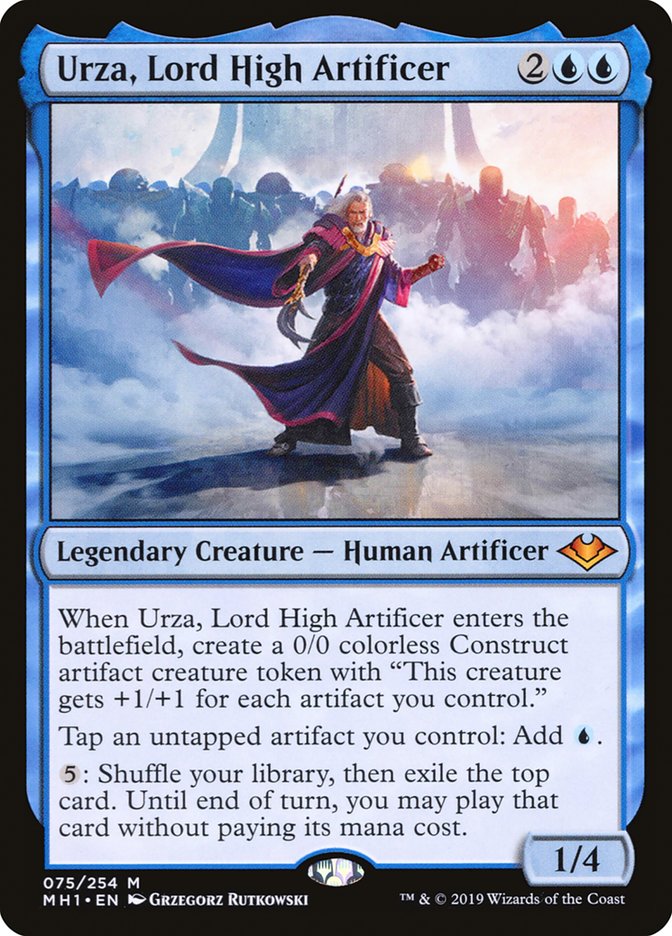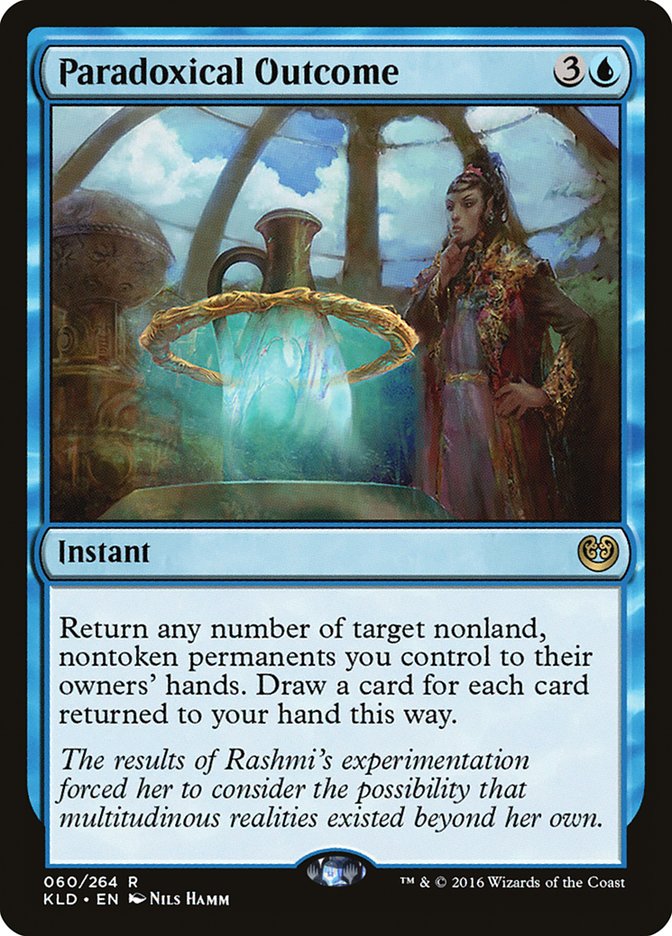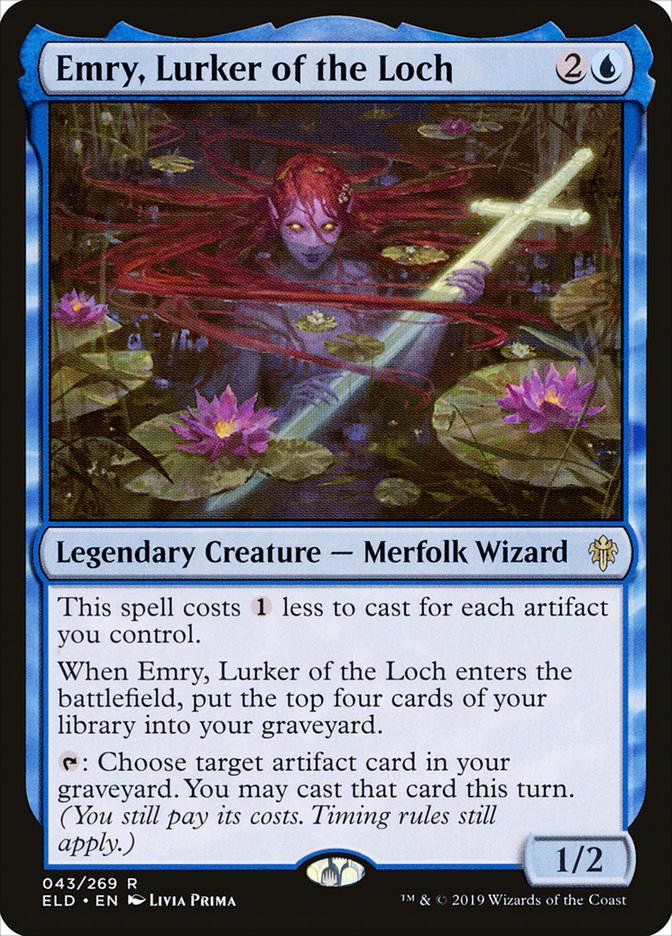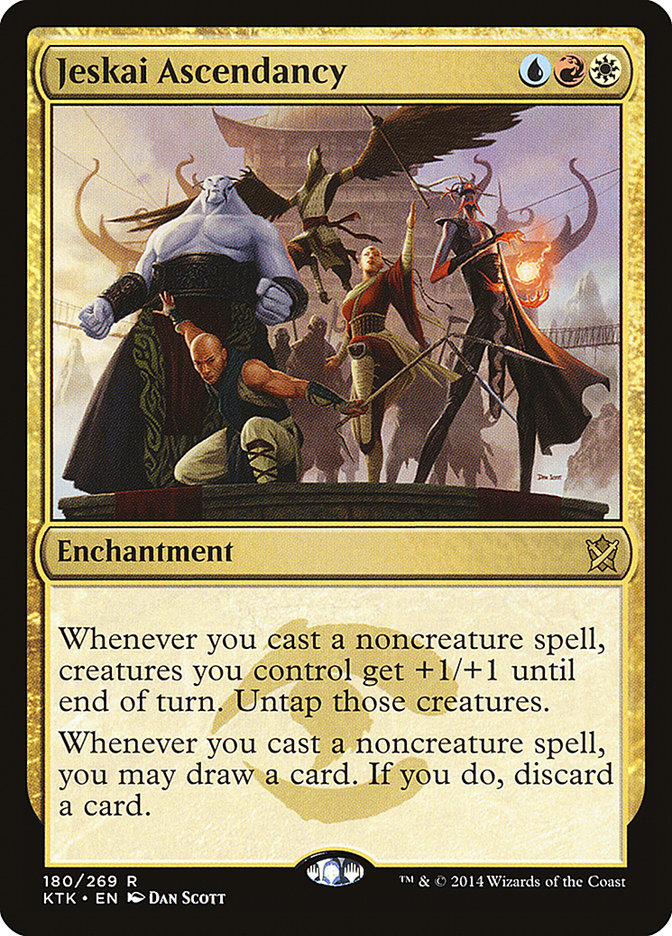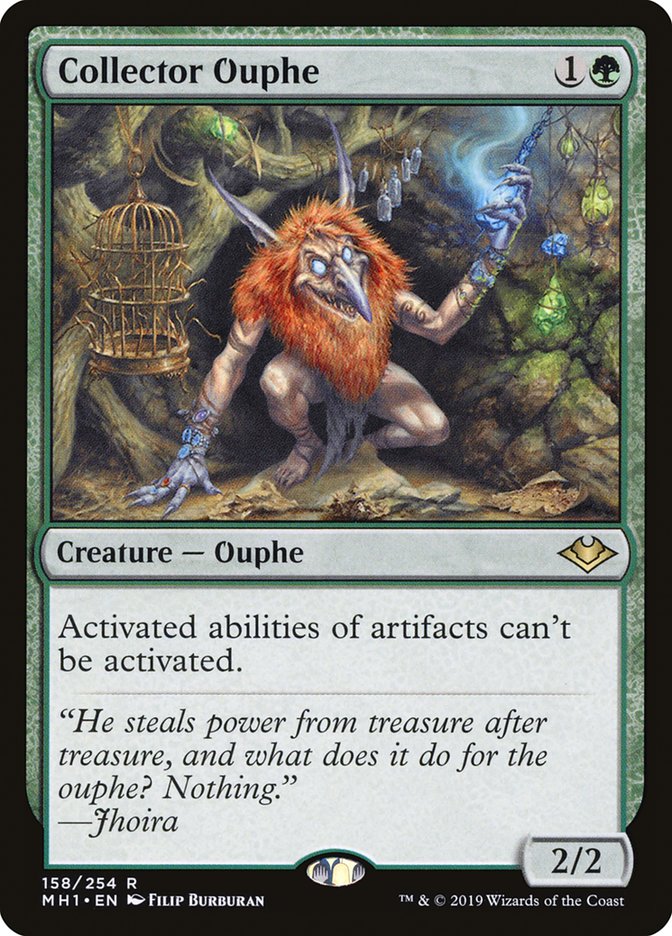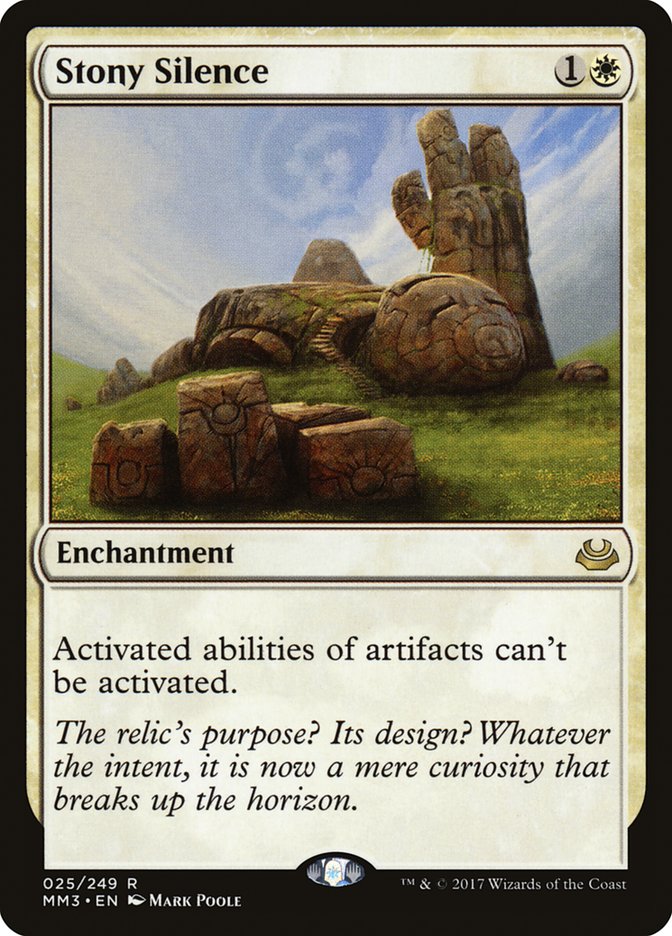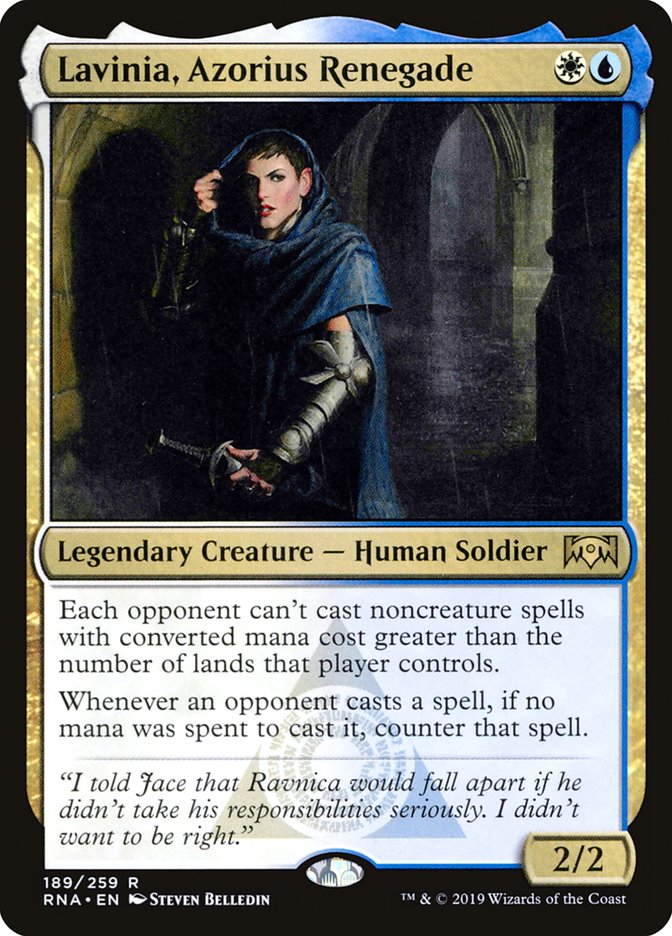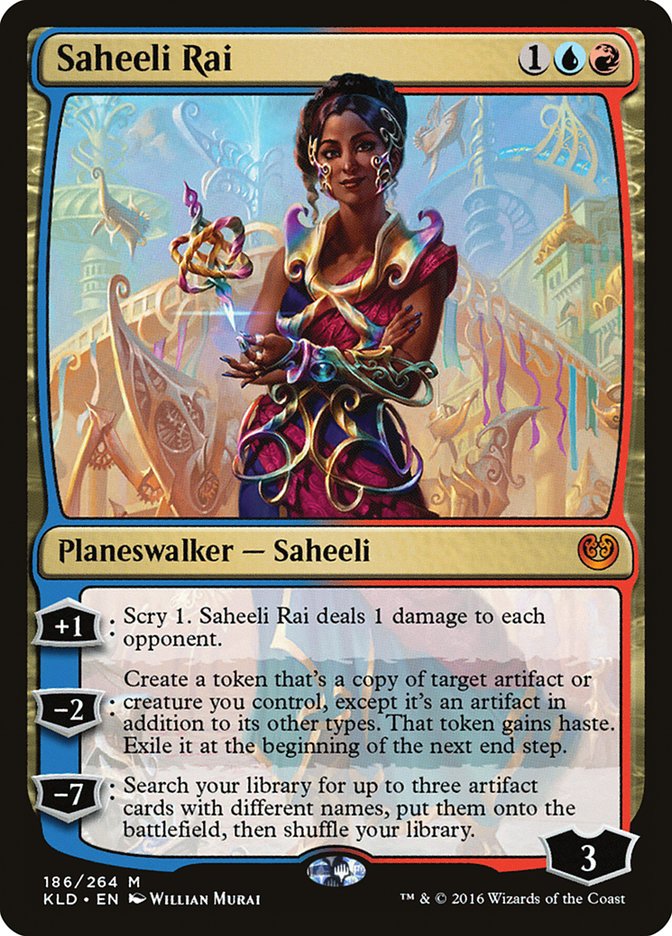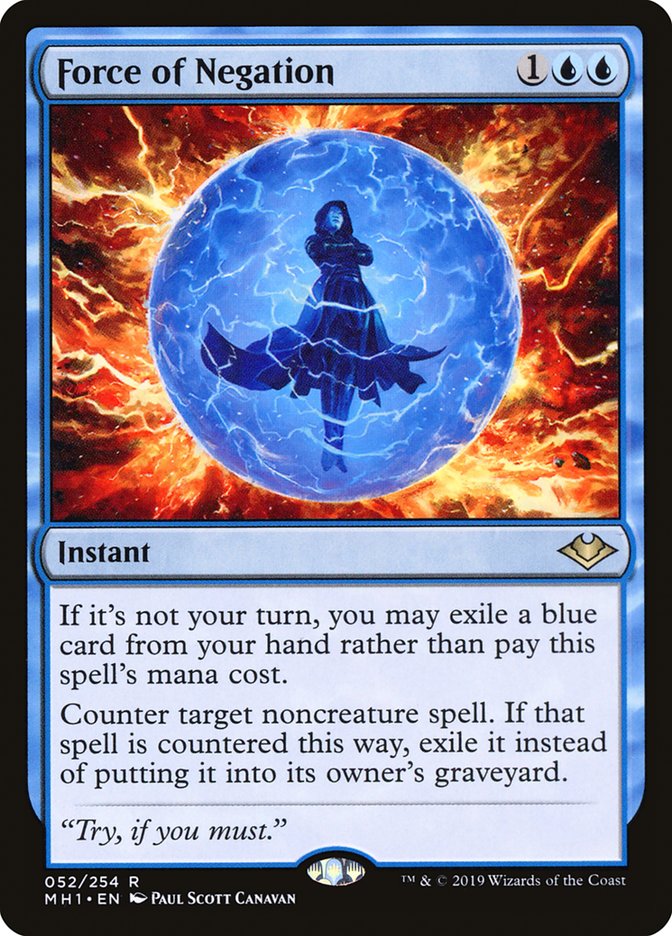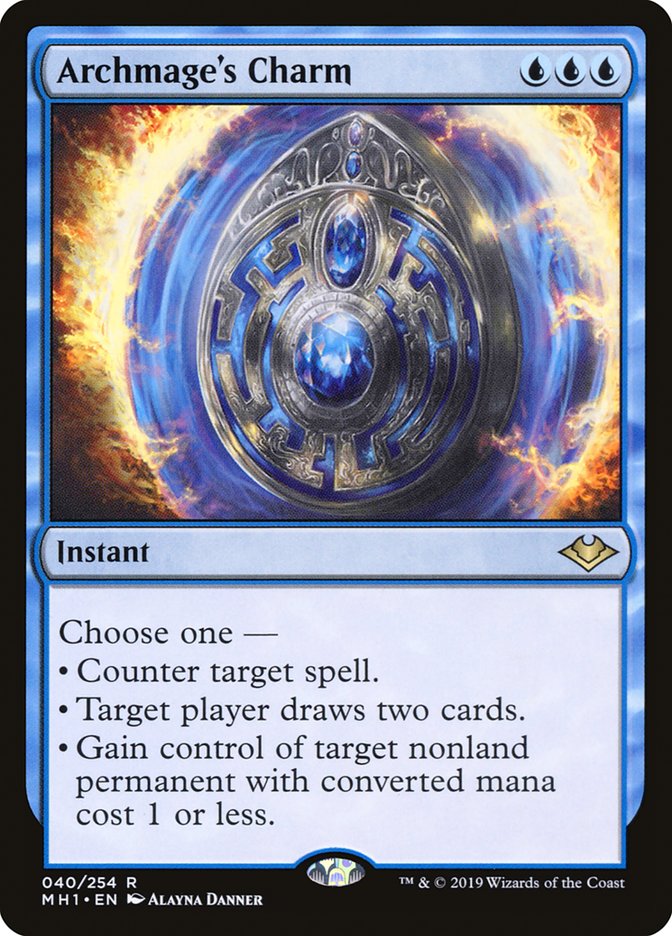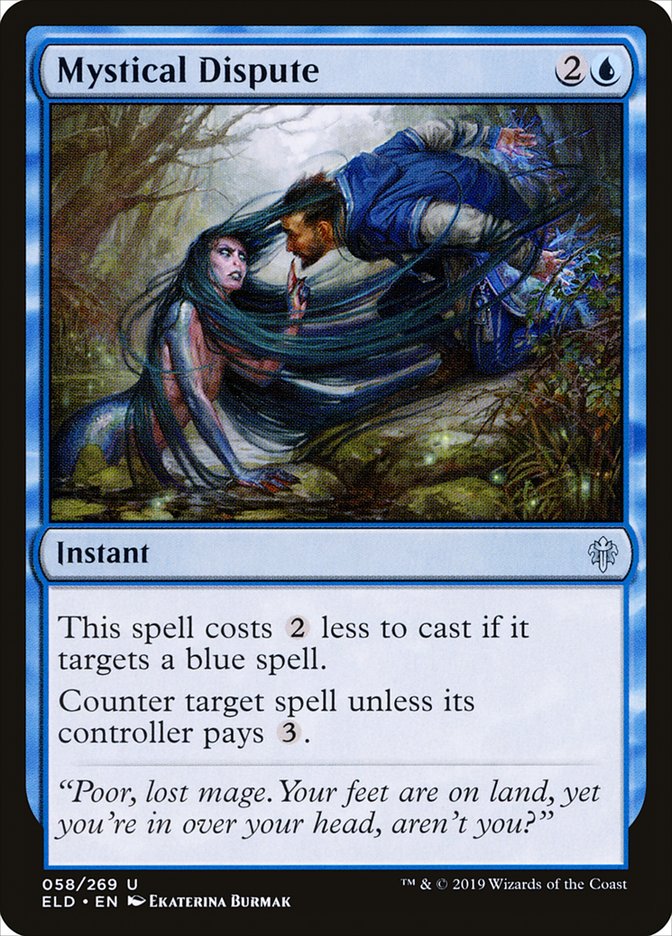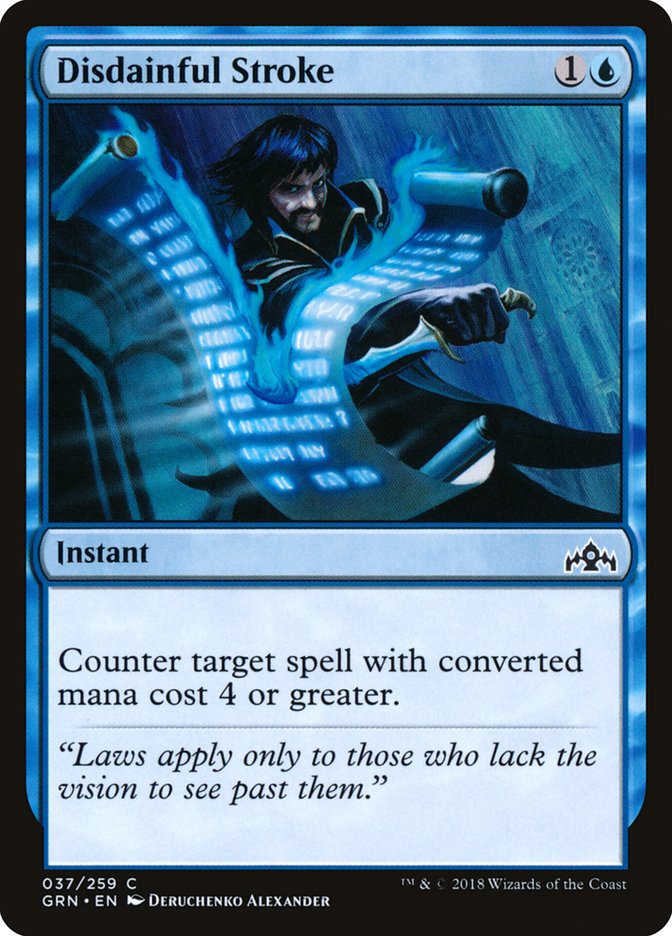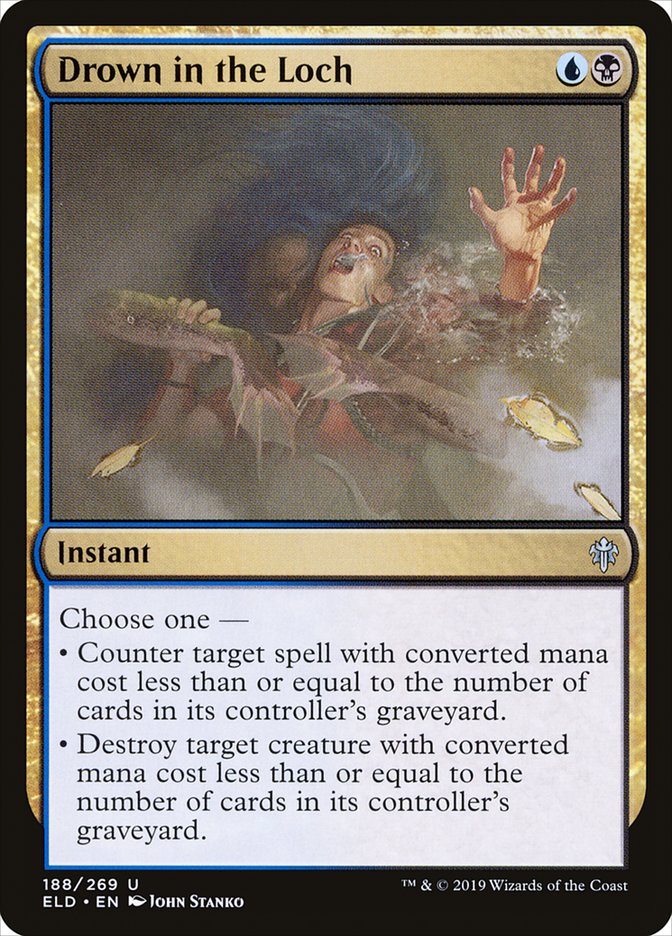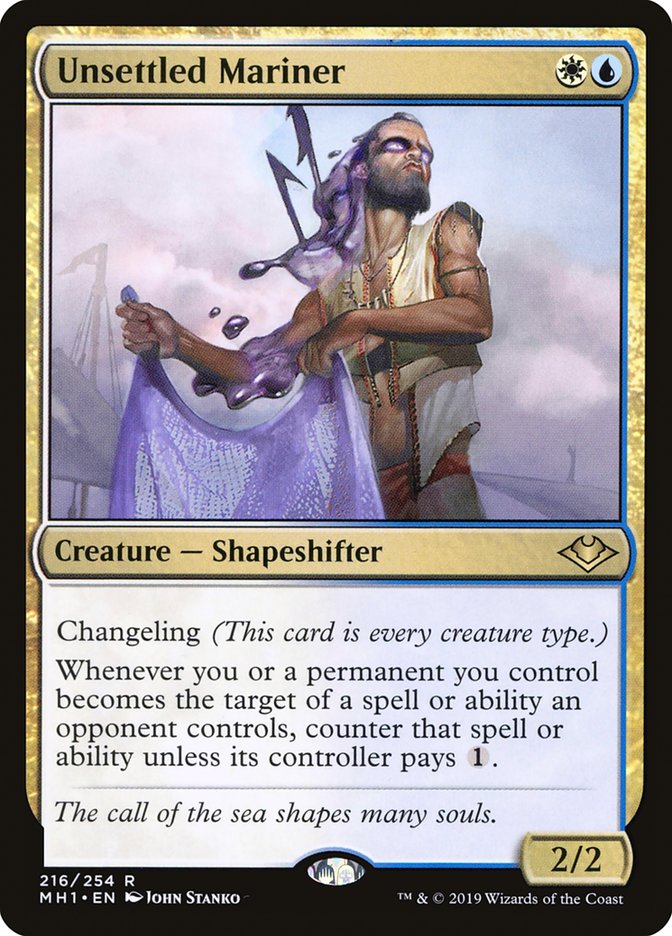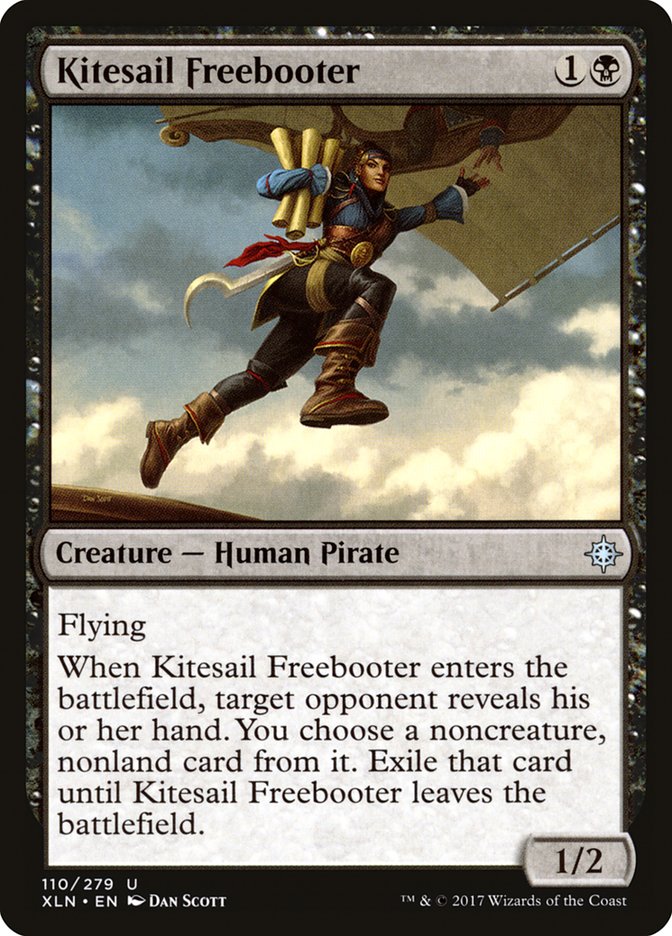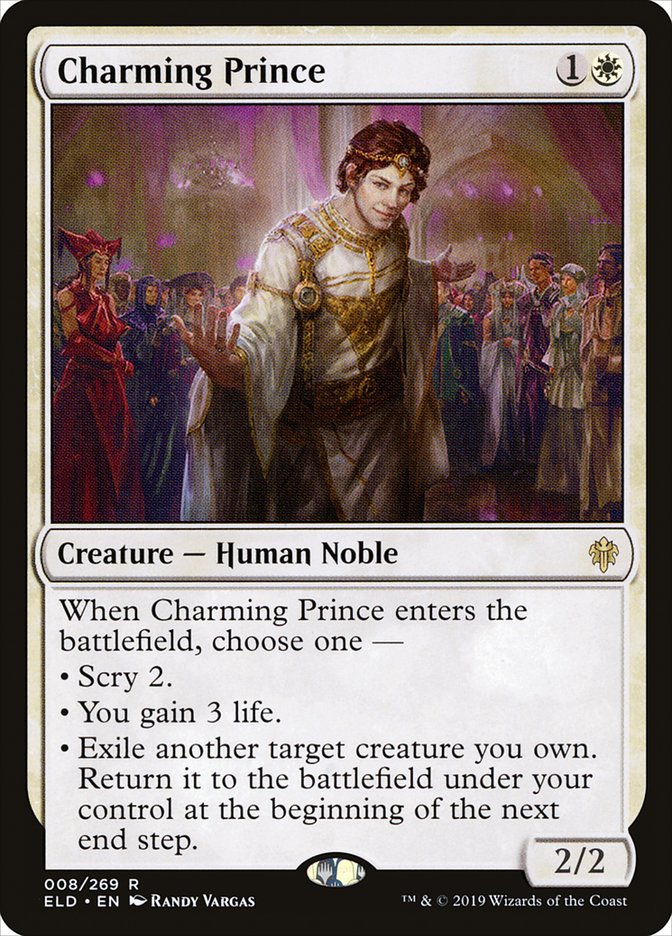Over the last two months, I’ve done nothing but play various Modern decks, testing out anything and everything since the banning of Faithless Looting. The format seems to have opened up a lot, but live results seemed to press toward something different:
But I’ve been tricked! Or, rather, I’ve tricked myself into thinking that Urza, Lord High Artificer and Paradoxical Outcome are too powerful for Modern. I think I’ve just been playing too many weaker archetypes to keep up with it, and it made me think it was significantly better than it actually was. When I played it myself, I kept losing to linear decks because I didn’t have a ton of interaction, and my average kill time was around four turns. I could fight through disruption with the likes of Saheeli, Sublime Artificer and Sai, Master Thopterist, but trying to beat up on other combo decks or big-mana decks was tough. Not impossible, but not easy either.
But the dagger in the heart was playing against these linear decks and facing off against their few pieces of interaction in the maindeck or sideboard. Gifts Storm with Remand was particularly tough, but Amulet Titan with some sideboard hate was incredibly difficult to defeat. All it really took was a clock and some disruptive element. Even Burn was hard because of Eidolon of the Great Revel and a consistently fast clock.
But the first day of SCG Indianapolis was just brutal. It seemed like every big name on the SCG Tour was playing some form of Urza, and the rounds went over time by twenty or more minutes every round. Just watching people combo off with Urza and Paradoxical Outcome was taxing, and I still think something should be banned for that reason alone. The “time to kill” factor in tournaments is definitely an issue for me, as I think it’s unreasonable to expect someone to sit there and “lose” for ten minutes without being able to perform an action.
Creatures (9)
Planeswalkers (2)
Lands (18)
Spells (31)

While I originally thought the Urza Outcome deck should be banned for strength purposes, the lack of interaction points and resiliency to discard effects really overshadowed how vulnerable the archetype was to counterspells. There are also some pretty specific sideboard cards that are problematic for them too, but very few people were playing them a few weeks ago. Today’s article will emphasize the rise in strength of counterspells in Modern as a means of combating big-mana decks and combos centered on four-mana spells.
Fight the Urza, Not the Outcome
While Paradoxical Outcome is a powerful card in its own right, there’s a reason it has seen virtually no play in Modern over the last year and change. It needed a way for you to generate a lot of extra mana or play a ton of free spells to make it viable, and Urza, Lord High Artificer allows you to do exactly that. If you want to attack the deck, your best bet is to go after Urza, and Urza alone. It’s the card that makes their deck tick, and if you can beat the “normal” game of Sai or Saheeli, stopping the Urza is your only real priority.
With that said, a newer iteration has been cropping up centering on Emry, Lurker of the Loch and Jeskai Ascendancy. That version can combo-kill you without Urza, adding a different angle of attack to the strategy. This iteration puts a lot more pressure on the linear decks to interact with you because you can kill on the second turn pretty easily with eight Moxen, but my experience with this archetype has shown me that trying to hybridize the two strategies (Outcome and Ascendancy) often leads to split draws that feature far too many pieces for the wrong half of the puzzle.
Regardless, most decks featuring Urza tend to focus on building their entire gameplan around it. That means if you can discard it, counter it, or kill it, you should be in good shape. Most of their advantage comes from generating an outrageous amount of mana with the tap ability and turning that into cards from Sai, Master Thopterist; Urza’s second ability; or Paradoxical Outcome. Without the mana, all those ways to generate card advantage are too costly.
Disrupting with Discard
Discard effects are also only viable forms of disruption against the deck if you have a clock to go with it, because the Urza deck is well-suited to churn through the library in search of more copies of their best cards. Inquisition of Kozilek also doesn’t hit two of their most important cards, which means you’re putting a lot of stress on Thoughtseize.
Discard effects also act as a tempo loss, because you’re spending one mana to trade one card for one card and they’re spending no mana. And lastly, discard effects can’t stop the top of your opponent’s deck! A timely draw from the opponent will result in them sticking one of their most powerful cards.
Over the last five or more years, Jund has been one of the best disruptive strategies because interacting with your opponent for one mana was more desirable than trying to use a counterspell. It’s not that hard to imagine a format in Modern where discard spells are good. Thoughtseize and Inquisition of Kozilek have been Modern staples for a long time. When they’re paired with Liliana of the Veil, it’s very easy to strip both players down to the bare minimum amount of resources with those discard effects, but it’s more difficult when a lot of these artifacts from the Urza decks replace themselves. It’s also hard for decks like Jund, or decks that use discard effects as their main form of disruption, to beat the “go wide” strategy of Urza Outcome.
Problematic Permanents
Trying to interact with Urza decks with permanents is also a tricky proposition because they’re already playing four copies of Engineered Explosives because it effectively becomes Mox Sapphire when Urza is on the battlefield. Free artifacts are also exceptional with Mox Opal and the token generators, so playing four copies of Engineered Explosives is a net positive for these archetypes. The best types of interaction against Urza are ones that shut down their ability to generate mana.
Stony Silence and Collector Ouphe are awesome, yet don’t really do much if the opponent can stick an Urza. So these permanents that shut them down need some help. If you can keep Urza in check with removal or provide a significant clock to go along with either of these cards, you should be in good shape. The fact that Urza just “beats” these two cards is incredibly frustrating to me, but I do love that these two cards aren’t affected by Engineered Explosives.
But there are a few cards that are particularly annoying for them to beat. Chalice of the Void on zero has very few outs, because these decks don’t play many (if any) colorless lands. That means a Chalice of the Void on zero stops all their free cards, turning off their ability to abuse Paradoxical Outcome and pump out a fast Urza. This one can be played through, as they still get tokens from Saheeli and Sai, but if you cast it early you can really stifle their development.
This is one of my favorite hate cards for the archetype because it doubles as a way to fight other big-mana decks or opponents who are playing free spells. It’s also a creature, which combines the ability to apply pressure while acting as a disruptive element. Lavinia, Azorius Renegade makes a lot of sense, as it’s one of the most disruptive cards in Vintage, where spells like Paradoxical Outcome shine.
I don’t want to say that Humans are going to make a comeback, but I’m going to be working on it sooner rather than later.
Casting Remand for Fun and Profit
One of the best ways to interact with Urza Outcome, big mana, or a variety of combo decks is with counterspells. As I said before, it isn’t often in Modern that we have a plethora of decks all casting four-or-more-mana spells on a regular basis, but that’s absolutely the sweet spot for counterspells in the format.
A lot of counterspells are pretty darn good right now, so we’re going to go over some of the better ones, and various decklists that can utilize them in the right ways.
Remand is only a good card if you’re hitting spells that cost two or more. After all, targeting something like Goblin Guide or Noble Hierarch with Remand just doesn’t feel the same as tagging a Karn Liberated or Urza, Lord High Artificer. Right now, I think Remand is in a perfect spot for Modern, but the trick is using it in the right way.
Decks that need to solve a problem should likely just play Mana Leak, but decks that only need to buy time should definitely look into utilizing Remand at the moment. Slowing your opponent down, hitting land drops, and buying time to assemble some gameplan that’s hard to beat once you get going — that’s how you really start churning with Remand. And Drake Sasser’s Gifts Storm deck is a perfect example of doing just that.
Creatures (8)
Lands (18)
Spells (34)
- 2 Sleight of Hand
- 4 Serum Visions
- 4 Gifts Ungiven
- 4 Desperate Ritual
- 3 Merchant Scroll
- 1 Echoing Truth
- 2 Opt
- 2 Remand
- 2 Grapeshot
- 4 Manamorphose
- 4 Pyretic Ritual
- 2 Past in Flames
Sideboard

In Gifts Storm, you really just need to buy time. Remand helps dig for important combo pieces, slows down your opponent, helps you hit land drops, and just so happens to be completely busted with Baral, Chief of Compliance and Goblin Electromancer. As a Gifts Storm player, you don’t really care much about what your opponent is doing unless they’re disruptive or killing you before you kill them.
But that isn’t the only type of deck that can utilize Remand:
While Mana Leak has been my go-to counterspell for Delver of Secrets at the moment, that’s mostly due to me copy-pasting lists from Magic Online. Remand was always my baby and always pretty good alongside Delver of Secrets as a one-two punch. Remand was also glorious in Splinter Twin because you played almost entirely at instant speed while having a combo that virtually ignored most of what your opponent was doing. Like Gifts Storm, you just wanted to slow them down, hit land drops, and dig for combo pieces. While the Saheeli Rai / Felidar Guardian combo is pretty similar, it’s not quite the right shell for Remand. You tap out too much, or you should if you want to get max value out of Felidar Guardian itself.
Creatures (13)
Lands (20)
Spells (27)

Here, as the Delver deck, you can stifle the opponent’s development while digging toward more action by utilizing Remand. Tempo decks have put Remand to good use in the past, but my aversion to the card stemmed more from the hostility of the format than the utility of the card itself. If you’ve ever cast Remand, you understand just how good it can be. However, Modern has a way of having an extremely low curve and can virtually invalidate Remand or make it less desirable than a harder answer like Mana Leak.
But Mana Leak has similar problems on the other end of the scale. Early in the game, Remand is weak against cheap spells. Mana Leak is bad in the later turns if your opponent is playing cheap spells. Many Modern decks can also invalidate Mana Leak by going way over the top or casting spells that don’t really care if they get countered, so Remand is significantly better in those scenarios.
Force of Negation is incredible. It’s so much better than I ever thought, but you do need to be coming at your opponent with an immense amount of pressure or creating a wall of protection with Force of Negation as the “last line of defense.” Alongside Delver of Secrets or Young Pyromancer, Force of Negation is an absolutely outrageous card, but it doesn’t stop the expensive creatures running around. Not stopping Primeval Titan, Wurmcoil Engine, or Urza is a bummer, but we didn’t sign up to play Force of Will in Modern.
I’ve actually found myself being pretty happy spending three mana to Negate something. The exile effect has been quite strong in several matchups, but specifically against Past in Flames. Overall, Force of Negation is probably my second-favorite counterspell right now.
My favorite counterspell at the moment is Archmage’s Charm, and I don’t even cast it as a counterspell all that often! Having diversity built into your cards is excellent in Modern, as the wide range of archetypes means you’ll be facing off against decks that require multiple types of answers. Against control, being able to draw cards or counter their big stuff is huge. Against aggro, stealing a Goblin Guide is sometimes your only way to keep yourself alive. And against combo decks, creating a wall of counterspells can prevent their combos from assembling.
Archmage’s Charm is an exceptional card that doesn’t get nearly the credit it deserves, and I’ve absolutely loved playing with it in Delver decks. Now I’m just curious how good it is in a control deck like Blue Moon.
While it’s seeing an uptick in maindeck play in Throne of Eldraine Standard thanks to blue having a ton of good cards, Mystical Dispute has started to see some sideboard play in Modern thanks to how good it is against Urza Outcome. Being able to counter a lot of different spells for one mana is a big deal, and especially so if your deck doesn’t have the capability to hold up a lot of mana every single turn. Disdainful Stroke and Negate also don’t hit all the important stuff, while Mystical Dispute catches all their heavy hitters.
A great sideboard option for many decks, Disdainful Stroke helps stifle Primeval Titan, Mono-Green Tron, and even Urza. A lot of Modern decks have expensive payoffs at the moment, but that’s mostly because everyone is trying to cheat on mana. Disdainful Stroke helps stifle the mana production of Urza while also giving you a catch for opposing strategies that like to go big with one or two payoffs.
Drown in the Loch is a newer addition to the format, but make no mistake: it is one of the better Modern cards to come out of recent sets. Much like Archmage’s Charm, diversity makes Modern cards better. Here we have a counterspell that doubles as a removal spell, effectively eliminating the problems you would normally have with one type of interaction or another. Often in control decks, you die with counterspells in hand because your opponent got under them. Sometimes you lose to a big planeswalker or something with a Doom Blade in your hand. While Drown in the Loch takes some work to make great, most people in Modern just fill their graveyard by casting spells.
Thought Scour targeting your opponent has become the new norm for decks that want to play Drown in the Loch, but luckily you also have a real payoff for doing that with Into the Story, another great card for control decks.
Creatures (5)
Lands (24)
Spells (31)

The Big Picture
The main point I’m trying to make is that counterspells are traditionally good when people are spending a lot of mana on the spells they’re trying to cast. Remand is specifically huge against strategies that spend three or more mana on a lot of different spells. Remand also shines against opponents that are playing mostly at sorcery speed. All these things are true in Modern right now, which means Remand is at an all-time high.
I’ve always loved playing Remand, and I’ve been pretty down about it being lackluster in Modern over the last few years. It’s one of the major reasons I picked up Jund a few years back, because discard effects were just a better form of disruption. The banning of Splinter Twin also killed the shell for the best Remand deck in the format.
While disruption or speed is required for success in most Modern decks, the variation on what types of disruption you can play is wild. The ones I’ve listed in today’s article are just scratching the surface, but suffice it to say that Modern usually has the tools at its disposal to self-correct. And while stuff like Mox Opal is absurdly powerful and likely shouldn’t be in the format to begin with, it isn’t always oppressive. While I was afraid Urza Outcome would overpower those disruptive elements, it’s always nice to be reminded that forms of disruption still exist that punish these “go big” archetypes.
Moving forward, I want to see if Humans still has legs in the format. I think people are currently playing the wrong type of disruptive Human creature spells, and my goal is to bring together a few ideas I’ve had for building Humans for the future.
Creatures (37)
- 4 Meddling Mage
- 4 Noble Hierarch
- 4 Champion of the Parish
- 3 Thalia, Guardian of Thraben
- 4 Mantis Rider
- 4 Reflector Mage
- 4 Thalia's Lieutenant
- 2 Lavinia, Azorius Renegade
- 4 Unsettled Mariner
- 4 Charming Prince
Lands (19)
Spells (4)

The Humans archetype usually thrives when the rest of the format is degenerate, but the exception to that is when it is leaning toward big mana. Mono-Green Tron and TitanShift are tough matchups, because you’re not usually fast enough to beat their nut draws and your interaction isn’t always the best. We can fix some of that with Lavinia, Azorius Renegade, but the point will always remain the same. And while stuff like Meddling Mage can protect you from disaster on occasion, their payoffs are usually diverse enough in name and all still pretty devastating.
Interactive decks can be problematic, but Unsettled Mariner should definitely help in that regard. With Thalia, Guardian of Thraben taxing your opponent’s mana, anyone trying to interact with your creatures should be thoroughly overwhelmed. It doesn’t do much against the more degenerate decks in the format, but we need a healthy balance of creatures that protect us from multiple archetypes. And one archetype I’m pretty afraid of right now is Burn.
I always liked Phantasmal Image because it counted as a Human and could create redundant effects of creatures you already had on the battlefield. But drawing one when your creatures all got killed or when you’re flooded was never all that great, and Charming Prince lets you do very similar things. The upside is that it’s much better as a standalone creature than Phantasmal Image and can randomly gain life against Burn to help you survive longer.
I’ve always secretly (and publicly) hated Kitesail Freebooter, but right now is definitely not the time to be relying on it to do anything meaningful. The fact that it doesn’t take creatures from the opponent is especially heinous when most of these big-mana decks rely on creatures to do some of the heavy lifting.
The sideboard additions all make a lot of sense, if only because they’re creatures that generally answer problematic stuff. Gaddock Teeg is no longer hanging around because it doesn’t stop Primeval Titan or Urza. Plague Engineer helps handle some of the more annoying token generators, but also randomly slams other Aether Vial decks, which are occasionally bad matchups because they’re more about synergy and less about disruption.
I think Charming Prince is a phenomenal addition to the archetype, giving you a virtual Phantasmal Image that works better on its own without being vulnerable to your weaker draws or random targeted stuff from the opponent. Ever since the printing of Lava Dart, my desire to play Phantasmal Image is virtually nonexistent.
The trick with Humans is finding the right disruptive elements and the right numbers for each. Right now, I don’t like Kitesail Freebooter because it can’t take the most important payoffs from many of Modern’s top decks. And while Lavinia, Azorius Renegade doesn’t fix all your problems, you have to remember that no one Human in your deck fixes all your problems. It takes a village!
Modern is in flux at the moment, but we’re still seeing a lot of decks running around that we’re used to seeing. But with Faithless Looting no longer in the format, a lot of other archetypes should get room to breathe. It’ll be interesting to see which ones are good against Amulet Titan or Urza. I’ve spent the last month and a half trying out all sorts of new Modern brews, and all I really know is that a lot of different archetypes seem viable. I just hope that remains as we get more live results.


